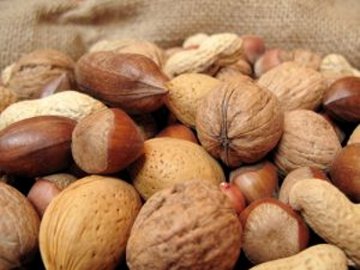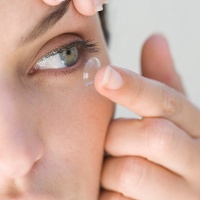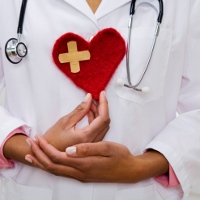How is cancer diagnosed and staged?
Early detection of cancer can greatly improve the odds of successful
treatment and survival. Physicians use information from symptoms and
several other procedures to diagnose
cancer. Imaging techniques such as X-rays, CT scans, MRI scans, PET
scans, and ultrasound scans are used regularly in order to detect where a
tumor is located and what organs
may be affected by it. Doctors may also conduct an endoscopy, which is a
procedure that uses a thin tube with a camera and light at one end, to
look for abnormalities inside the body.

Extracting cancer cells and looking at them under a microscope is the
only absolute way to diagnose cancer. This procedure is called a biopsy.
Other types of molecular diagnostic tests
are frequently employed as well. Physicians will analyze your body's
sugars, fats, proteins, and DNA at the molecular level. For example,
cancerous prostate cells release a higher
level of a chemical called PSA (prostate-specific antigen) into the
bloodstream that can be detected by a blood test. Molecular diagnostics,
biopsies, and imaging techniques are all used
together to diagnose cancer.
After a diagnosis is made, doctors find out how far the cancer has
spread and determine the stage of the cancer. The stage determines which
choices will be available for treatment and
informs prognoses. The most common cancer staging method is called the
TNM system. T (1-4) indicates the size and direct extent of the primary
tumor, N (0-3) indicates the degree to
which the cancer has spread to nearby lymph nodes, and M (0-1) indicates
whether the cancer has metastasized to other organs in the body. A
small tumor that has not spread to lymph
nodes or distant organs may be staged as (T1, N0, M0), for example.
TNM descriptions then lead to a simpler categorization of stages, from 0
to 4, where lower numbers indicate that the cancer has spread less.
While most Stage 1 tumors are curable, most
Stage 4 tumors are inoperable or untreatable.
How is cancer treated?
Cancer treatment depends on the type of cancer, the stage of the cancer
(how much it has spread), age, health status, and additional personal
characteristics. There is no single treatment
for cancer, and patients often receive a combination of therapies and
palliative care. Treatments usually fall into one of the following
categories: surgery, radiation, chemotherapy,
immunotherapy, hormone therapy, or gene therapy.
Surgery
Surgery is the oldest known treatment for cancer. If a cancer has not
metastasized, it is possible to completely cure a patient by surgically
removing the cancer from the body. This is often
seen in the removal of the prostate or a breast or testicle. After the
disease has spread, however, it is nearly impossible to remove all of
the cancer cells. Surgery may also be instrumental
in helping to control symptoms such as bowel obstruction or spinal cord
compression.
Radiation
Radiation treatment, also known as radiotherapy, destroys cancer by
focusing high-energy rays on the cancer cells. This causes damage to the
molecules that make up the cancer cells
and leads them to commit suicide. Radiotherapy utilizes high-energy
gamma-rays that are emitted from metals such as radium or high-energy
x-rays that are created in a special machine.
Early radiation treatments caused severe side-effects because the energy
beams would damage normal, healthy tissue, but technologies have
improved so that beams can be more
accurately targeted. Radiotherapy is used as a standalone treatment to
shrink a tumor or destroy cancer cells (including those associated with
leukemia and lymphoma), and it is also used
in combination with other cancer treatments.
Chemotherapy
Chemotherapy utilizes chemicals that interfere with the cell division
process - damaging proteins or DNA - so that cancer cells will commit
suicide. These treatments target any rapidly
dividing cells (not necessarily just cancer cells), but normal cells
usually can recover from any chemical-induced damage while cancer cells
cannot. Chemotherapy is generally used to
treat cancer that has spread or metastasized because the medicines
travel throughout the entire body. It is a necessary treatment for some
forms of leukemia and lymphoma.
Chemotherapy treatment occurs in cycles so the body has time to heal
between doses. However, there are still common side effects such as hair
loss, nausea, fatigue, and vomiting.
Combination therapies often include multiple types of chemotherapy or
chemotherapy combined with other treatment options.
Immunotherapy
Immunotherapy aims to get the body's immune system to fight the tumor.
Local immunotherapy injects a treatment into an affected area, for
example, to cause inflammation that causes a
tumor to shrink. Systemic immunotherapy treats the whole body by
administering an agent such as the protein interferon alpha that can
shrink tumors. Immunotherapy can also be
considered non-specific if it improves cancer-fighting abilities by
stimulating the entire immune system, and it can be considered targeted
if the treatment specifically tells the immune
system to destroy cancer cells. These therapies are relatively young,
but researchers have had success with treatments that introduce
antibodies to the body that inhibit the growth of
breast cancer cells. Bone marrow transplantation (hematopoetic stem cell
transplantation) can also be considered immunotherapy because the
donor's immune cells will often attack the
tumor or cancer cells that are present in the host.
Hormone therapy
Several cancers have been linked to some types of hormones, most notably
breast and prostate cancer. Hormone therapy is designed to alter
hormone production in the body so that
cancer cells stop growing or are killed completely. Breast cancer
hormone therapies often focus on reducing estrogen levels (a common drug
for this is tamoxifen) and prostate cancer
hormone therapies often focus on reducing testosterone levels. In
addition, some leukemia and lymphoma cases can be treated with the
hormone cortisone.
Gene therapy
The goal of gene therapy is to replace damaged genes with ones that work
to address a root cause of cancer: damage to DNA. For example,
researchers are trying to replace the
damaged gene that signals cells to stop dividing (the p53 gene) with a
copy of a working gene. Other gene-based therapies focus on further
damaging cancer cell DNA to the point
where the cell commits suicide. Gene therapy is a very young field and
has not yet resulted in any successful treatments.












